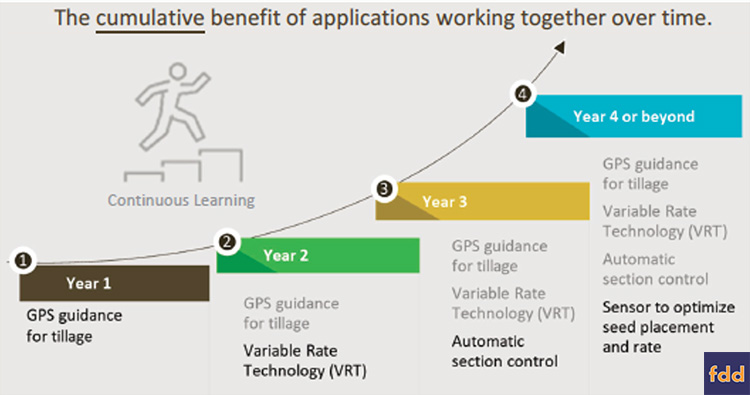This article was originally published on the farmdoc Daily website by Micah Pope and Steve Sonka.
Precision agriculture has become mainstream in commercial agriculture production, and many would agree that it is “the way we farm today.” Utilization of technology varies from farmer to farmer, but the decision to invest in technology is commonly tied to the potential for increased efficiency and profitability.
However, over the last couple of years, we’ve observed an interesting paradox when visiting with farmers who use precision agriculture technologies. Often, we would ask: “What is the economic return from use of those technologies?” That question consistently yields a two-part response:
- “Hmm, I don’t really know…”
- “But that’s an interesting question!”
As part of a recent study[1] entitled “Use of On-Farm Digital Technologies”, we worked with a small group of farmers to develop an approach enabling them to respond to the “what is the economic return” question. The results of this pilot investigation reveal that farmers perceive the net benefits (or contribution to profits) of adopting technologies to be quite substantial, with an almost 10 to 1 benefit-cost ratio. This contrasts with the more conventional wisdom that technology adoption results in positive, but small, returns.
Understanding the value of technology is increasingly important in an environment of narrow crop margins, when deploying technologies to optimize returns is critical. Appropriately, farmers typically adopt digital technologies on an application-by-application basis (i.e., will GPS guidance sufficiently reduce fuel costs to pay for itself). However, the expansion of technology use over time tends to have systemic, cumulative benefits that go unrecognized at the whole farm level. The graphic below illustrates this process.

A challenge with quantifying the economic benefits of precision and digital technology adoption is that farmers lack tools and methods that enable comprehensive analysis. Because of the diversity of farm size and practices in production agriculture, comprehensive benchmarking is challenging and typically is not conducted. The systemic benefits and the whole farm effects of employing technologies tend, therefore, to not be quantified. To fill this gap, a benchmarking framework was developed and utilized in the study to help farmers quantify the economic benefits of adopting technologies on their farms.
Read the full article online at farmdoc Daily.




 and then
and then